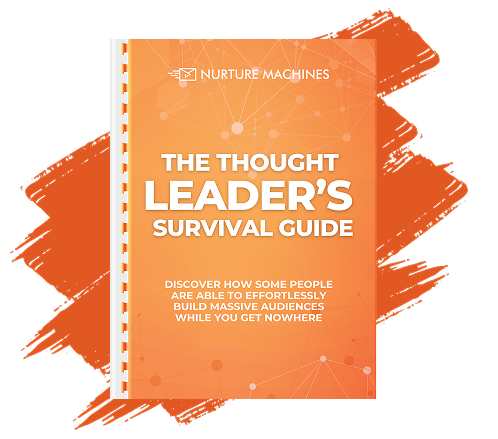Are you struggling to nurture leads effectively and boost sales? Automated lead nurturing strategies can streamline your process and drive engagement. This article explores proven automation tactics to qualify leads, enhance engagement, and measure success. You’ll learn how to overcome common challenges and stay ahead with future trends in lead nurturing. By implementing these strategies, you’ll save time, improve conversion rates, and ultimately increase your sales.
Key Takeaways
- Automated lead nurturing uses data to deliver personalized content throughout the buyer’s journey
- Effective automation relies on segmentation, timely communication, and seamless onboarding
- Personalized content, behavior-based triggers, and audience segmentation enhance engagement in lead nurturing
- Measuring success through KPIs, conversion rates, and customer journey analytics is crucial for optimization
- Future trends focus on AI, machine learning, and omnichannel approaches to refine lead nurturing processes
Understanding Automated Lead Nurturing Strategies

Automated lead nurturing strategies streamline sales processes and enhance customer loyalty. These systems use firmographics and behavioral data to deliver personalized content, such as white papers, throughout the buyer’s journey. Effective automation relies on segmentation, timely communication, and seamless onboarding. By understanding these key components, businesses can create more engaging and profitable customer relationships.
Definition and Importance of Automated Lead Nurturing
Automated lead nurturing is a strategic process that leverages technology to guide potential customers through the sales funnel. It involves using software to send targeted emails, personalized content, and relevant assets based on a prospect’s behavior and interests. By automating this process, businesses can efficiently nurture leads, providing them with valuable information at each stage of their journey, from initial contact to investment decision. This approach is crucial for retail and B2B companies alike, as it helps maintain engagement, build trust, and ultimately increase conversion rates without requiring constant manual intervention.
Key Components of Effective Automation
Effective lead nurturing automation relies on several key components that work together to enhance user experience and drive conversions. A well-maintained mailing list serves as the foundation, allowing organizations to reach their target audience precisely. Lead scoring mechanisms help prioritize prospects based on their engagement and potential value, ensuring timely follow-ups. By implementing these elements alongside personalized content delivery and data-driven insights, businesses can create a seamless lead nurturing automation process that efficiently guides prospects through the sales funnel.
Proven Strategies to Enhance Engagement Through Automation

Automated lead nurturing strategies enhance engagement through personalized content, behavior-based triggers, drip campaigns, and audience segmentation. Research-backed approaches ensure expert-level targeting, leveraging social proof to boost customer satisfaction. These tactics improve usability, creating tailored experiences that effectively guide prospects through the sales funnel.
Personalizing Content for Targeted Campaigns
Personalized content is a cornerstone of effective lead nurturing strategies. Businesses can tailor their messaging to each prospect’s unique needs and preferences by leveraging predictive lead scoring and intelligence. This approach enhances lead generation and fosters brand loyalty by delivering relevant, timely content throughout the customer journey. Effective personalization goes beyond simply addressing recipients by name; it involves crafting targeted campaigns that resonate with specific segments of the audience, nurturing leads through each stage of the sales funnel:
- Analyze customer data to identify key segments
- Create persona-specific content for each segment
- Use automation tools to deliver personalized messages
- Track engagement metrics to refine targeting strategies
Utilizing Behavior-Based Triggers for Timely Interactions
Behavior-based triggers enable timely and relevant interactions with leads, enhancing engagement and boosting return on investment. Businesses can automatically send targeted messages that address specific needs or pain points by monitoring actions such as website visits, email opens, or shopping cart abandonment. This approach builds credibility and reputation by demonstrating attentiveness to customer behavior, ultimately increasing the likelihood of conversion and fostering long-term relationships.
Implementing Drip Campaigns for Continuous Engagement
Drip campaigns are a powerful tool in automated lead nurturing, delivering a series of targeted messages over time to maintain continuous engagement. These campaigns follow a predetermined workflow, guiding leads through the sales funnel with strategically timed content. By conducting regular audits of their content strategy, businesses can ensure their drip campaigns remain effective and relevant. A well-structured drip campaign can significantly impact various stages of the customer journey, from initial awareness to post-purchase follow-ups:
- Welcome series for new subscribers
- Educational content to nurture leads
- Abandoned cart reminders for e-commerce
- Cross-selling and upselling campaigns
- Re-engagement series for inactive subscribers
Segmenting Your Audience for Tailored Messaging
Segmenting audiences enables businesses to deliver tailored messages that resonate with specific customer groups, driving engagement and boosting income. Companies can create targeted campaigns that increase brand awareness and improve response rates by dividing customers based on demographics, behavior, or preferences. This omnichannel approach ensures that each segment receives relevant content across various platforms, enhancing the overall customer experience and fostering long-term loyalty.
Automating the Lead Qualification Process

Automating lead qualification streamlines the process of identifying and nurturing high-potential prospects. Businesses can enhance their email campaigns and ads by implementing scoring systems based on engagement and behavior, utilizing CRM tools for automated management, and aligning sales and marketing efforts through automation. This approach optimizes lead nurturing, improves conversion rates, and ultimately boosts sales efficiency.
Scoring Leads Based on Engagement and Behavior
Lead scoring based on engagement and behavior is a crucial component of automated lead qualification. By assigning numerical values to specific actions and interactions, businesses can prioritize sales leads and focus on those most likely to convert. This personalization approach allows companies to tailor their outreach efforts to their target market, enhancing the overall customer experience. Effective lead scoring considers factors such as website visits, email opens, content downloads, and social media interactions, providing a comprehensive view of each prospect’s interest level and readiness to purchase.
Utilizing CRM Tools for Automated Lead Management
CRM tools play a vital role in automating lead management, streamlining the process of nurturing and qualifying leads. These platforms enable businesses to track customer interactions, send targeted newsletters, and gather valuable feedback, enhancing sales engagement and improving SEO efforts. By centralizing lead data and automating follow-ups, CRM systems help sales teams prioritize high-potential leads and tailor their outreach strategies for maximum impact.
Aligning Sales and Marketing Efforts Through Automation
Aligning sales and marketing efforts through automation enhances lead qualification and nurturing campaigns. By integrating text messaging and machine learning into automated lead nurturing systems, businesses can create a seamless flow of information between departments. This technology enables real-time data sharing, allowing sales teams to act on qualified leads promptly while marketing teams refine their strategies based on sales feedback.
Metrics to Measure the Success of Automated Lead Nurturing

Measuring the success of automated lead nurturing strategies is crucial for optimizing campaigns and improving sales. Key performance indicators for engagement, such as open rates and content interaction, provide insights into lead interest. Analyzing conversion rates and sales growth helps assess the effectiveness of calls to action and pricing strategies. Customer journey analytics offer a comprehensive view of lead progression, enabling businesses to refine their nurturing processes and create more targeted content.
Key Performance Indicators for Engagement
Key performance indicators for engagement provide valuable insights into the effectiveness of automated lead nurturing campaigns. Metrics such as email open rates, click-through rates, and content interaction levels help marketers assess the relevance of their information and adjust strategies accordingly. Salesforce and other CRM platforms offer robust analytics tools that enable businesses to track these KPIs, while predictive analytics can forecast future engagement trends, allowing for proactive campaign optimization.
Analyzing Conversion Rates and Sales Growth
Analyzing conversion rates and sales growth provides valuable insights into the effectiveness of lead nurturing campaigns. Marketers can track key statistics such as the percentage of leads that become customers and the increase in revenue over time. By examining these metrics, businesses can optimize their automated email marketing strategies, adjusting the frequency and content of communications to better resonate with consumers. This data-driven approach allows companies to continuously refine their nurturing processes, leading to improved conversion rates and sustained sales growth.
Understanding Customer Journey Analytics
Customer journey analytics provide valuable insights into the effectiveness of automated lead nurturing strategies. By leveraging lead nurturing software and SMS capabilities, businesses can track and analyze how leads interact with their content across various touchpoints in the network. This automated approach allows marketers to refine their strategy based on real-time data, identifying key conversion points and optimizing the customer experience throughout the sales funnel.
Overcoming Challenges in Automated Lead Nurturing

Automated lead nurturing faces data quality, compliance, and system integration challenges. Addressing these issues is crucial for effective marketing automation and email automation. By focusing on data accuracy, privacy concerns, and seamless integration, businesses can enhance customer support, achieve upselling goals, and optimize their nurturing strategies. Overcoming these obstacles ensures more effective engagement and improved sales outcomes.
Addressing Data Quality Issues
Addressing data quality issues is crucial for effective automated lead nurturing. CRM systems rely on accurate information to nurture leads effectively, making data cleansing a priority for leadership teams. Businesses can improve the quality of their lead data by implementing robust search engine optimization strategies and leveraging chatbots for data collection. This approach enhances the nurturing process, ensuring that automated campaigns target the right prospects with relevant content:
| Data Quality Challenge | Solution | Impact on Lead Nurturing |
|---|---|---|
| Incomplete lead information | Implement progressive profiling | More personalized nurturing campaigns |
| Outdated contact details | Regular data cleansing | Improved email deliverability |
| Duplicate entries | Use CRM deduplication tools | Consistent messaging across touchpoints |
Navigating Compliance and Privacy Concerns
Navigating compliance and privacy concerns is crucial for businesses implementing automated lead nurturing strategies. Customer retention efforts must align with data protection regulations, ensuring that content marketing practices respect user privacy. Brands can address these challenges by implementing robust consent management systems, regularly auditing their data handling processes, and using podcasts to educate their audience on privacy policies. This approach not only helps businesses maintain legal compliance but also builds trust with potential customers, enhancing the effectiveness of their lead nurturing efforts:
| Compliance Area | Strategy | Impact on Lead Nurturing |
|---|---|---|
| Data Collection | Implement clear opt-in processes | Increased trust and engagement |
| Data Storage | Use secure, compliant CRM systems | Enhanced data protection and integrity |
| Communication Preferences | Offer easy opt-out options | Improved recipient satisfaction and brand perception |
Ensuring Seamless Integration With Existing Systems
Ensuring seamless integration with existing systems is crucial for effective automated lead nurturing. Marketing teams must select tools that complement their current technology stack, including CRM platforms and Google Ads accounts. By integrating these systems, businesses can create a unified approach to nurture leads across all touchpoints. This streamlined management process allows for more efficient data flow, enabling marketers to deliver personalized content and track lead progress more effectively throughout the sales funnel.
Future Trends in Automated Lead Nurturing Strategies

Future trends in automated lead nurturing strategies focus on leveraging AI and machine learning to enhance marketing strategies. These advancements enable businesses to refine their nurturing processes, improving lead generation and conversion rates. Omnichannel approaches are gaining importance, allowing for seamless engagement across multiple platforms. As consumer expectations evolve, automation adapts to deliver personalized experiences, utilizing search engine data and knowledge-driven insights to optimize lead nurturing efforts.
The Role of AI and Machine Learning in Automation
AI and machine learning are revolutionizing automated lead nurturing strategies, enhancing the sales process and lead generation efforts. These technologies enable businesses to analyze vast amounts of customer data, predicting behaviors and preferences with unprecedented accuracy. By leveraging AI-powered tools, companies can create highly personalized advertising campaigns that resonate with potential customers at every stage of the lead nurture journey. This advanced automation streamlines the sales funnel and improves conversion rates by delivering the right message to the right lead at the optimal time.
Increasing Importance of Omnichannel Approaches
Omnichannel approaches are becoming increasingly crucial in automated lead nurturing strategies, as digital marketing evolves beyond traditional single-channel methods. Lead management now requires a seamless integration of multiple touchpoints, including email, social media, and mobile apps, to create a cohesive customer experience. By leveraging automated lead systems across various platforms, businesses can provide consistent messaging and personalized interactions without resorting to spamming. This comprehensive approach ensures that every resource is utilized effectively, maximizing engagement and conversion rates throughout the customer journey:
- Integrate email, social media, and mobile app communications
- Provide consistent messaging across all channels
- Personalize interactions based on customer behavior and preferences
- Track and analyze customer interactions across platforms
- Optimize resource allocation for maximum engagement
Adapting to Changing Consumer Expectations Through Automation
Automation is revolutionizing how companies adapt to changing consumer expectations on the internet. By analyzing language patterns and online behavior, automated systems can predict prospects’ needs and preferences with increasing accuracy. This allows businesses to tailor their messaging and offerings in real-time, ensuring relevance and maintaining engagement throughout the customer journey. As consumer demands evolve, automation enables companies to stay agile, continuously refining their lead nurturing strategies to meet and exceed expectations:
- Implement AI-powered chatbots for instant customer support
- Use predictive analytics to anticipate customer needs
- Personalize content based on individual browsing history
- Automate social media responses for timely engagement
- Develop dynamic pricing models based on real-time market data
Conclusion
Automated lead nurturing strategies revolutionize customer engagement by personalizing interactions, streamlining processes, and maximizing conversion rates. By leveraging advanced technologies like AI and machine learning, businesses can create targeted campaigns that resonate with prospects at every stage of the buyer’s journey. Effective implementation of these strategies requires a focus on data quality, compliance, and seamless integration with existing systems, while also adapting to evolving consumer expectations. As the digital landscape continues to evolve, companies that embrace automated lead nurturing will be well-positioned to drive engagement, boost sales, and maintain a competitive edge in their respective markets.






